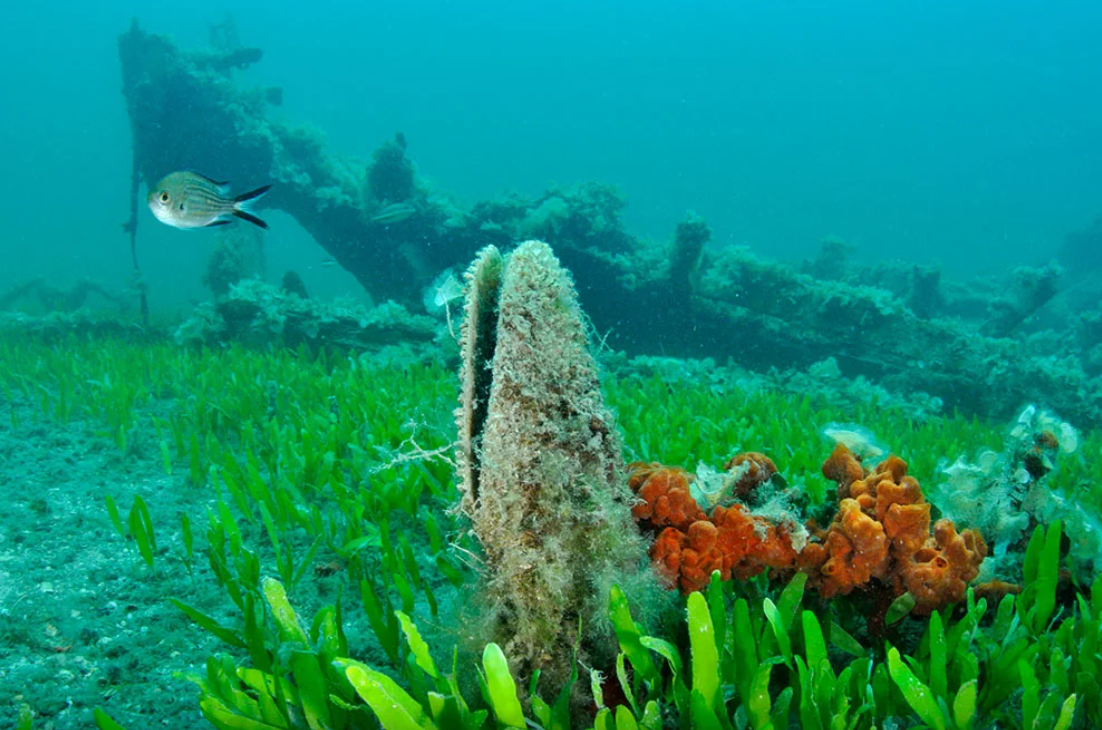This bivalve, similar to a mussel, can reach a length of 1 meter and live up to 45 years, but now its survival is at risk.
Over the past few weeks, researchers from the Laguna Project, experts in marine studies, scientists, and biologists dedicated to preserving the Venice Lagoon, have confirmed the presence of a rich population of healthy Noble pen shells (Pinna nobilis) within the Venetian Lagoon. This positive news rekindles attention towards the conservation and protection of the noble pen shells.
Saving noble pen shells by breeding them in captivity
In recent years, the mass mortality of the Pinna nobilis, affecting the entire Mediterranean Sea, has raised significant concern among organizations dedicated to the conservation and protection of marine biodiversity. This endemic bivalve, within a handful of years, has transitioned from being widely distributed throughout the basin to being classified as ‘critically endangered’ according to the International Union for Conservation of Nature’s Red List.
In 2021, aiming to recover the species in the Mediterranean, the European project Life Pinna was launched, dedicated to saving the commonly known ‘noble pen shell’: the Pinna nobilis. The primary objective of the project is to monitor and protect surviving individuals of Pinna nobilis in the Western Mediterranean and the Adriatic Sea, while also developing captive breeding techniques to repopulate specific areas with individuals resistant to diseases. This new operational methodology could then be replicated to repopulate other areas of the Mediterranean that have been left devoid of these large bivalves.
The goals of Life Pinna
Thanks to European projects aimed at the recovery and protection of marine species, the mollusks in the Upper Adriatic are undergoing thorough investigation, including genetic analysis, as they have been found to be more resistant to pathogens. The Life project is collecting larvae from these resilient bivalves to rear them in captivity, with the aim of promoting repopulation in the most suitable sites
Among the objectives of experts and scientists is the ability to successfully breed the mollusk in captivity using genetic and scientific procedures that have been previously experimented with for other mollusk species but never applied to the Pinna nobilis. The success of this project extends throughout the entire Mediterranean because the best practices established will be replicated in other marine contexts. This will be possible thanks to technological innovation, laboratory breeding monitoring, and a strong focus on opportunities for reintroduction into the wild.
In support of research activities, ideas with a focus on outreach and environmental communication have also been developed. These include the creation of a nature documentary and the implementation of initiatives involving diving enthusiasts. These enthusiasts can make a significant contribution to species conservation through monitoring efforts.
The Pinna nobilis is extremely important for the Mediterranean and for maintaining water quality, as they are powerful filter-feeders that cleanse the seawater from debris, dirt, and impurities. Additionally, noble pen shells are highly effective in combating the erosion of seabeds, mitigating a process that has become increasingly unstoppable and problematic.


